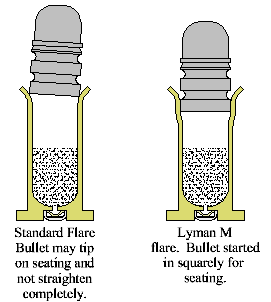First Glitch
Took the AR out for a shoot this morning.
My 50 rounds of the 55gn Sierra Sptizers went off without a hitch. Of interesting note, I shot three or four mags (10 round) where I loaded them alternately with Federal Eagle 55gn factory ammo. The factory loads were noticeably stronger.
The Sierra 65gn SBT's went off without a hitch. Which was the first eight rounds of these. Shot nice. Accurate. Hurt the bullseye with a tight pattern at 50 yards. (Using a reflex dot sight, so I wasn't conducting an accuracy test). I found it interesting that the 65 grain bullets hit the same point as the 55's.
I had a problem with the seven Winchester 64 grain PP bullets. On round 6, it failed to feed. I dropped the mag, racked it, and out fell the case - with the bullet pushed inside it and lots of powder falling about. Not enough neck tension, I suppose. The case was flaired to seat these. To compensate, I gave them a very light crimp. Too light, evidently. Anyway, I loaded the one remaining round in the middle of a mag of factory ammo - it fed, fired, and cycled fine. Accuracy seemed excellent with these - rivaling the Sierra 65's.
So that was that. Had my first failure. I'll load a few more of these Winchester 64 grainers and give 'em a little more crimp. Also, since I have the Lyman M expander die coming, I'll wait 'till I get that to do the flair (or "expand," since it doesn't "flair" in the conventional sense).
I checked my primers and all looks well. No signs of pressure. I have a couple hundred 55 gr bullets remaining and I'll continue to load them at 24.0 grains of AA2230. I have 300 each (minus the ones fired, per above) of the Sierra 65's and the Winchester 64's. I loaded them both at 23.5 grains, and they seemed to do just fine, so I see no reason to change.
It might be time to buy a large quantity of AA2230 - it does what I need it to do.
I'm liking this. It's fun to load for AR's. And . . . they're rather fun to shoot too.

